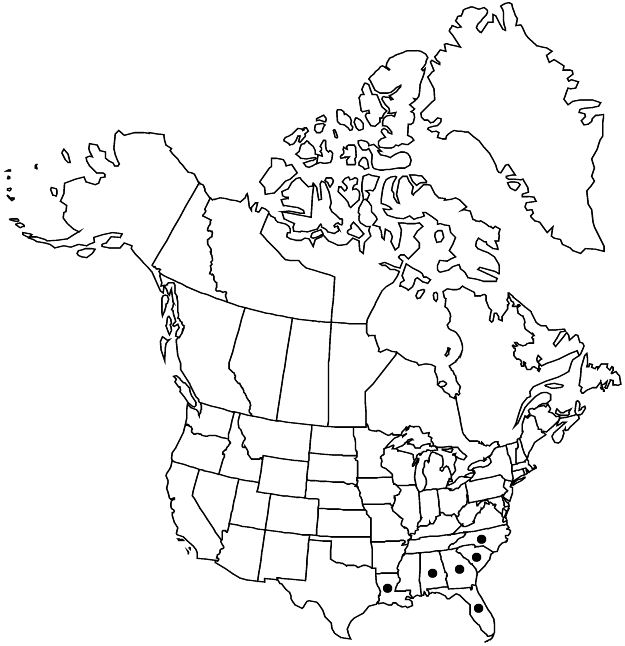Crataegus senta
Bot. Gaz. 30: 341. 1900.
Shrubs or trees, 60 dm, branches ± weeping. Stems: twigs: new growth green, pubescent, 1-year old purplish brown under exfoliating wax, older deep dull gray; thorns on twigs absent or numerous, straight to slightly recurved, 1-year old often copper to deep red, 1.5–5 cm. Leaves: petiole length 30–40% blade, roughly pubescent, black-glandular; blade dull green, abaxially paler, oblong-spatulate to cuneate or narrowly obdeltate, 3 cm, thin, ± floppy, base cuneate, lobes 1 or 2 per side distally, well defined, lobe apex acute, margins strongly crenate-serrate almost to bases, densely glandular, glands black, veins (2 or) 3 or 4 (or 5) per side, apex usually cuspidate, sometimes acute, adaxial surface sparsely pubescent young, main veins and axils hairy; on extension shoots larger, relatively wider, more deeply incised. Inflorescences 3–7-flowered; branches densely short-canescent; bracteoles deciduous, linear, margins short-stipitate-glandular, adaxially short-pubescent. Flowers 15–20 mm diam.; hypanthium tomentose; sepals narrowly triangular, margins glandular-serrate, abaxially pubescent; anther color not recorded; styles 3–5. Pomes 1–3 per infructescence, deep red, suborbicular, 10 mm diam., punctate, glabrous; sepals patent to reflexed; pyrenes 3–5.
Phenology: Flowering Apr–early May; fruiting Aug–Sep.
Habitat: Dry pine woods, open scrub, sand plains
Elevation: 100–800 m
Distribution

Ala., Fla., Ga., La., N.C., S.C.
Discussion
Crataegus senta is widespread from western North Carolina and South Carolina (where it is most common) to northern Florida and Georgia, with a disjunct record from West Feliciana Parish, Louisiana. Habitats are typical for the series.
Crataegus senta most resembles C. dispar but is more often confused with C. lancei. Short-shoot leaves of C. senta are narrower and are not as lanate as in C. dispar. Smaller leaves of C. senta have fewer veins (1 or 2 per side); their shape is more like that of C. lancei, but the differences of lobes and leaf teeth are striking (see key and C. lancei discussion). In C. senta, extension-shoot leaves differ little from those of the short shoots, having multiple, relatively short, acute lobes across the subterminal part. By contrast, the extension-shoot leaves of C. lancei are of a long-petiolate, narrowly rhombic form with 1–3 acute to subacute lobes per side. The large, red, cherrylike fruit, similar to that of C. lancei, is very striking.
Selected References
None.
Lower Taxa
"thin" is not a number."wider" is not a number."pubescent" is not a number."adnate" is not a number."dm" is not declared as a valid unit of measurement for this property.